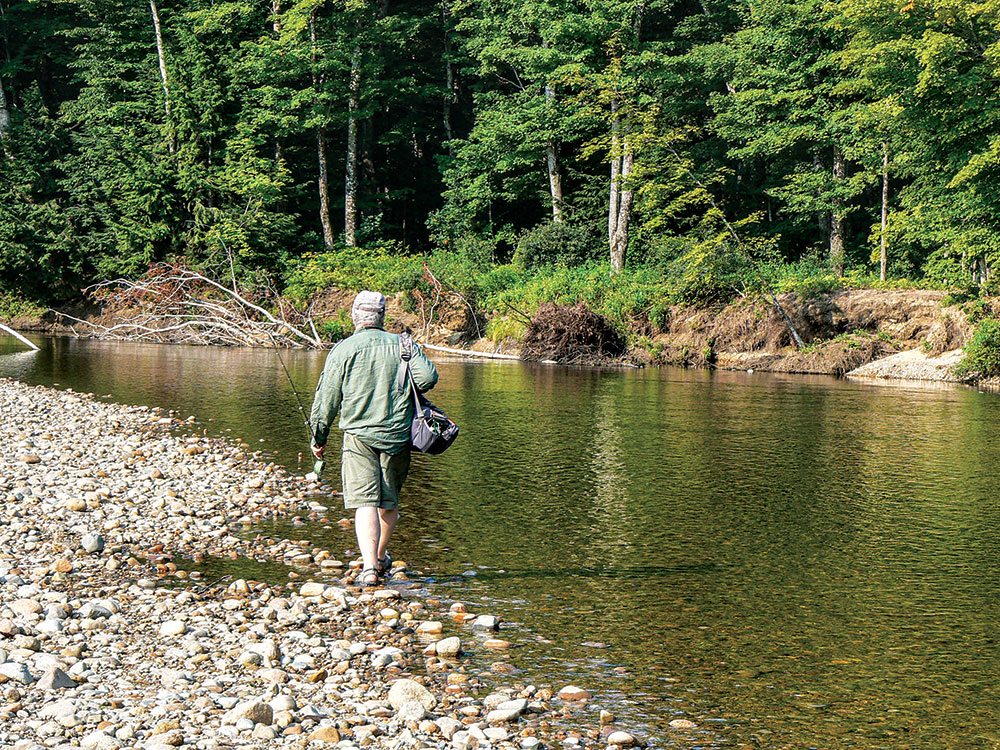Pulling moisture from the air might help you fight a drought.
As I write this piece, the western part of the United States faces record-breaking heat and massive drought. Here, in the Northeast, we’re also dealing with high temperatures, a three-year drought and no rain in sight. In some areas, water restrictions have gone into effect.
The lack of normal winter snows has left wells and reservoirs extremely low … or, in some cases, dry. My cistern, which allows me to capture rainwater I use to irrigate my garden, is bone dry.
So, as I sat and watched my garden struggle, I knew I needed to come up with a plan. That’s when it dawned on me to get water from … the air.
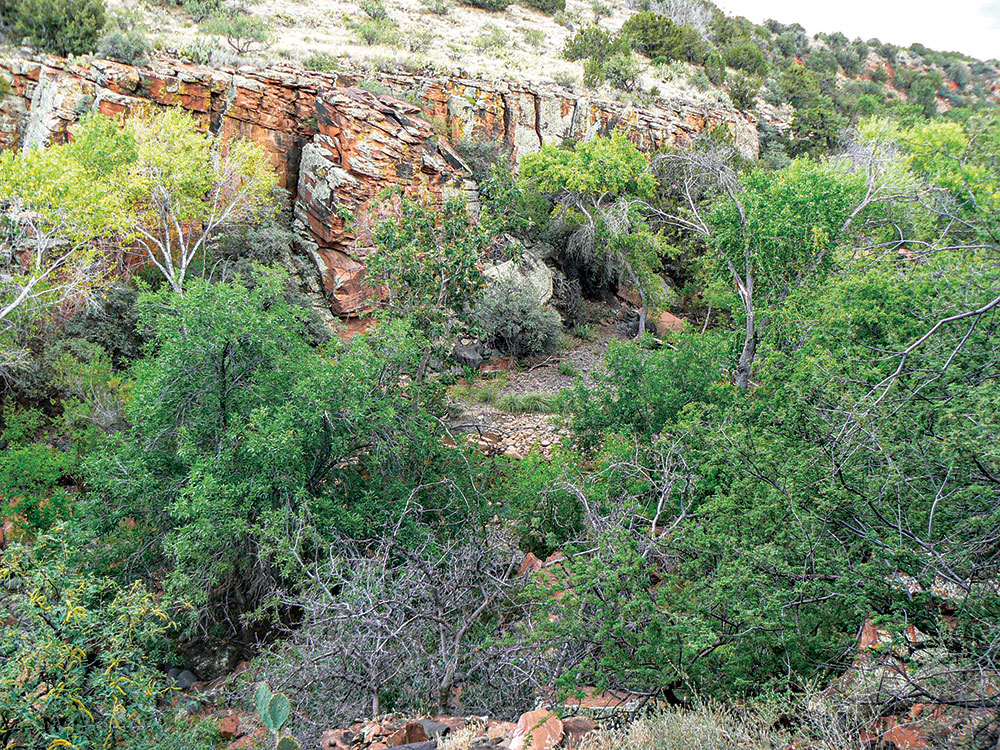
OLD CONCEPT
The idea of getting water from the atmosphere is nothing new. The very rain we’re all praying for uses this process. Just watch the weather, and you’ll often see rainstorms occurring when a warm front merges with a cold front. When moisture-rich, warm air clashes with dry, cold air, the moisture turns to either a liquid (rain) or a solid (snow and ice).
“Studies show that the air around us contains more than six times the amount of all the water in rivers. Harvesting this water on a large scale is a must, but it takes special equipment to do so efficiently.”
Because both are heavier than air, they fall to the ground. This process can also be seen when you put a cold bottle of water into the hot, humid air. Water droplets form through condensation on the outside of the bottle.
The water is in the air, so the question is, “How can we harness that water?”
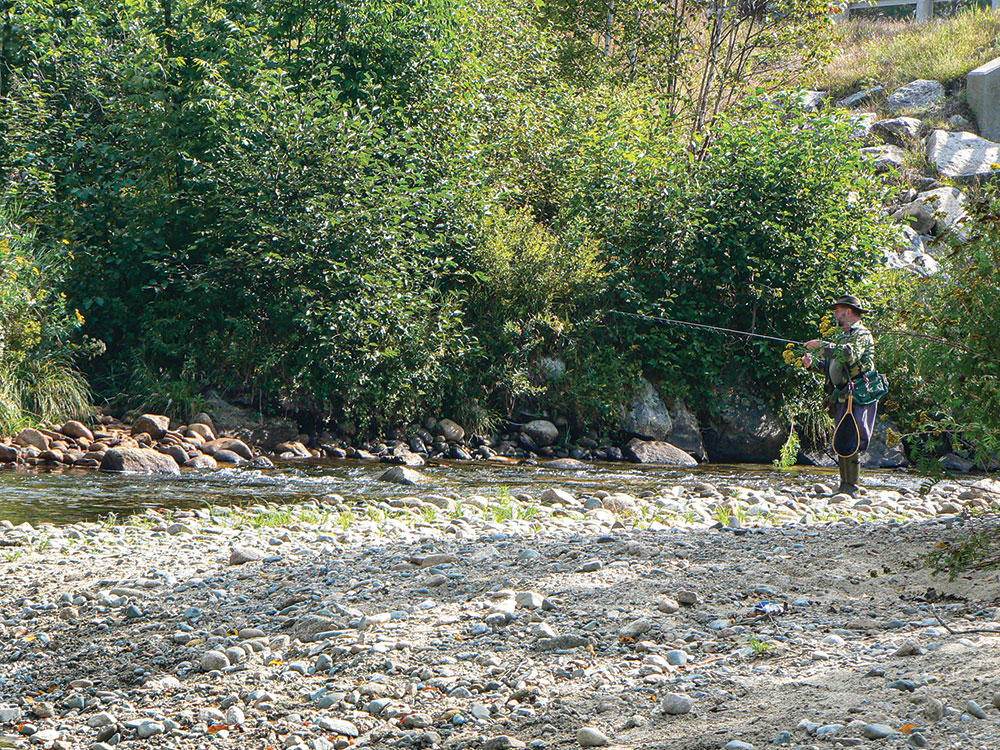
AIR CONDITIONERS AND DEHUMIDIFIERS
We’ve already developed a way to harness this natural process—at least on a small scale.
It comes in the form of air conditioners and dehumidifiers. Both inventions take warm air and pass it over coils of cold air.
“Both air conditioners and dehumidifiers take electricity to run; and although they’re more energy efficient than they used to be, they still take a lot of power.”
In the case of air conditioners, warm air is pulled from the outside and is run over coils of cold gases. The cooled air is blown back into the room, office or vehicle, and warm air is exhausted to the outside. The resulting water droplets formed when the warm air meets the cooling coil are expelled to the outside or into a receptacle, to be emptied later.
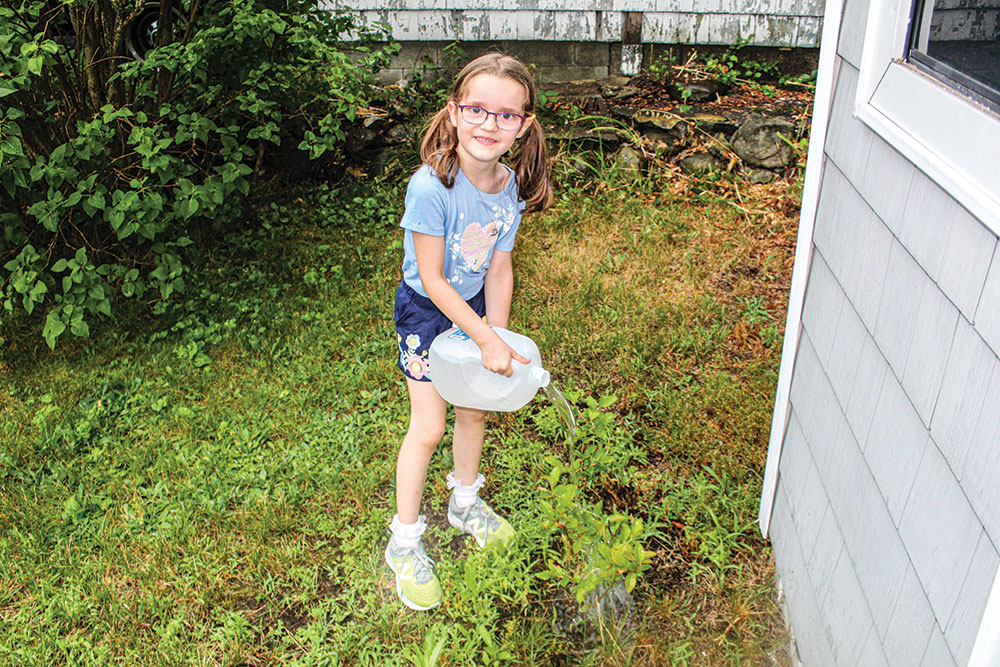
With dehumidifiers, the process is exactly the same, except the warm, humid air comes from inside the building, and the water droplets are dropped into a container, which needs to be emptied when full. Why can’t this collected water be used to water my garden; and, if it can be used for this purpose, why not for drinking water?
To test my theory, I started to bottle the water collected in recycled, 1-gallon, food-grade plastic jugs. In a single 24-hour period, my dehumidifier produced 3 gallons of water. This isn’t even counting the water produced by my air conditioners. Three gallons don’t seem like much, but we’re only talking about one home dehumidifier—and a small one, at that.
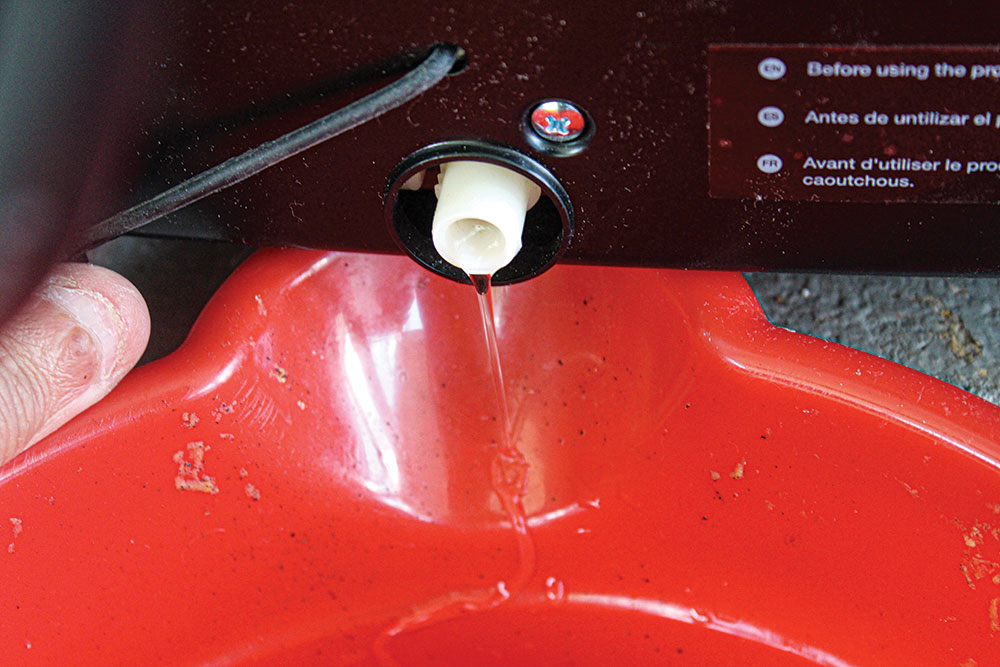
COLLECTING THE WATER
Generating the water is one thing, but collecting it is another. Dehumidifiers usually have a collection container that holds the water until you empty it. Some even have hose adapters that’ll drain the water as it’s generated.
“The lack of normal winter snows has left wells and reservoirs extremely low … or, in some cases, dry.”
When it comes to air conditioners, water collection can be a little more difficult. The new, stand-alone style of air conditioners, for which the unit sits in a room with only a hose going out the window to exhaust the hot air, is constructed quite similarly to dehumidifiers. These air conditioners have a water-holding system, and the water is discharged from a port (or, in some cases, two) that’s located on the back of the unit.
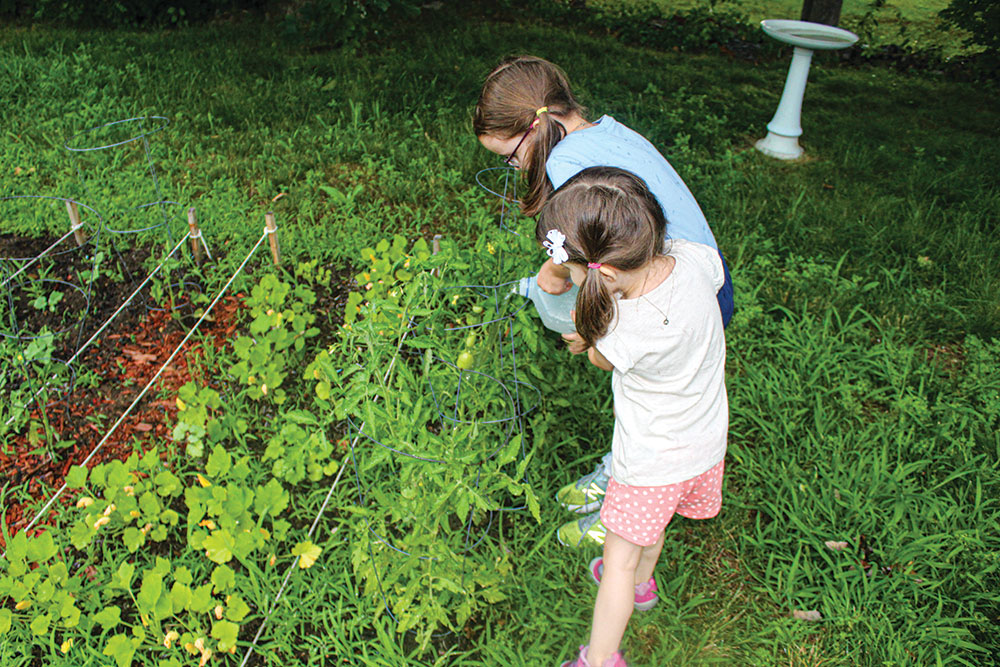
The old, window-mounted models are a bit trickier. They’re designed for the collected water to either evaporate or run out of weep holes located in the bottom of the housing, usually in the back of the unit. If you have one of these window-mounted models, a small drain hole can be carefully drilled into the housing. A hose can then be attached to allow water to drain into a container. However, you might not want to do this if you happen to have a brand-new air conditioner, because doing so will void your warranty.
PROS AND CONS
Both air conditioners and dehumidifiers take electricity to run; and although they’re more energy efficient than they used to be, they still take a lot of power. Just look at your electric bill if you don’t believe me.
One way to avoid the “sting” is to set your dehumidifier to turn on when the humidity reaches a certain “high” and then turns off when it reaches a preset “low.” The same can be done with your air conditioner by setting your highs and lows in the temperature range.
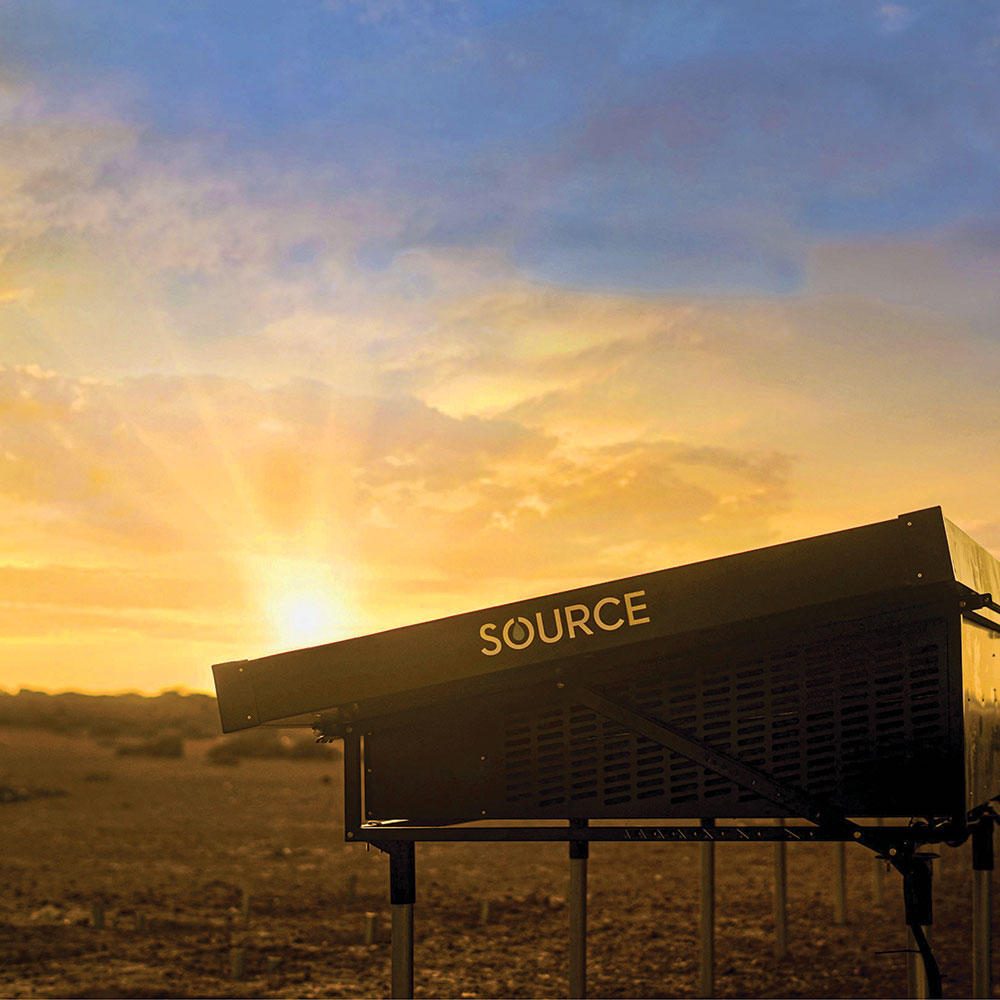
If you’re off the grid and are using solar panels or wind turbines, you can still run a small dehumidifier or air conditioner … but you’ll need a healthy array of panels and a large bank of batteries if you want to run much of anything else. Be sure your system is able to handle the load. Save power use by following the same pointers mentioned for on-grid power usage.
“In areas of low humidity, scientists are turning to the use of desiccants. ‘Desiccants’ are materials designed to draw moisture out of the air and hold it like a sponge.”
The water collected will be fine for watering your garden, but you might want to have it tested before drinking it or giving it to your livestock. Because these pieces of equipment were not designed to provide potable water, there could be trace amounts of various elements and bacteria in the water that’s produced. These contaminants come from the copper tubing and soldered joints inside the device, as well as from residue water trapped in the hoses that drain the water. At the very least, boil and filter the water.
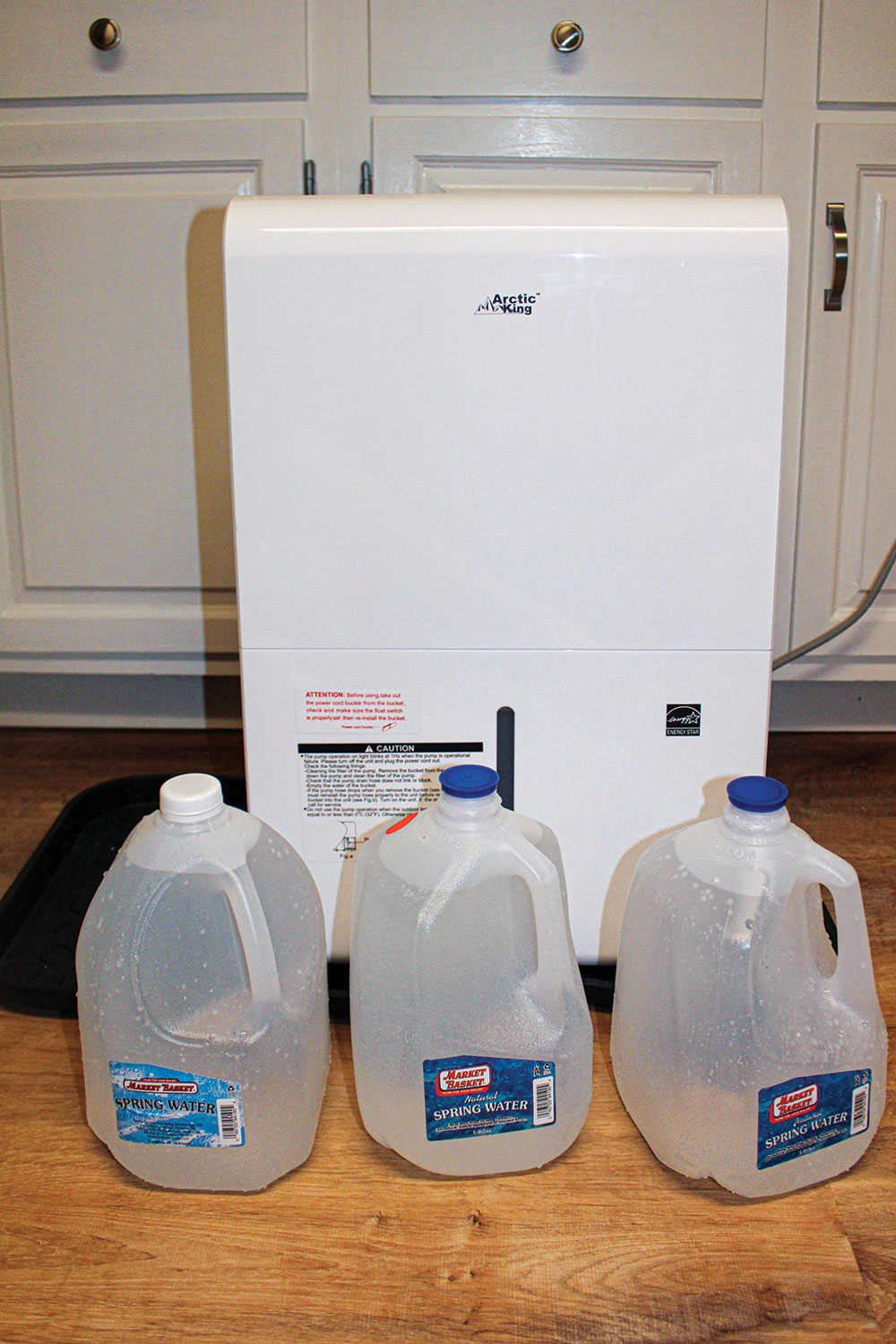
You’ll need to figure out if the cost to produce the water is financially worth it. My theory about this is based on the following factors:
- I’m running the air conditioner and dehumidifier anyway, so why waste the water? If I don’t save it, it’ll just be poured down the drain.
- If this water can be used, it’ll allow me to save the water I’d normally use to water my garden and use it for my family.
- Although summers seem to be getting longer and hotter, they’ll come to an end for the year, and both devices will be turned off and put away.
- I’d much rather “bite the bullet” now than lose my crops. My garden helps feed my family, and thus, it helps keep food costs down.
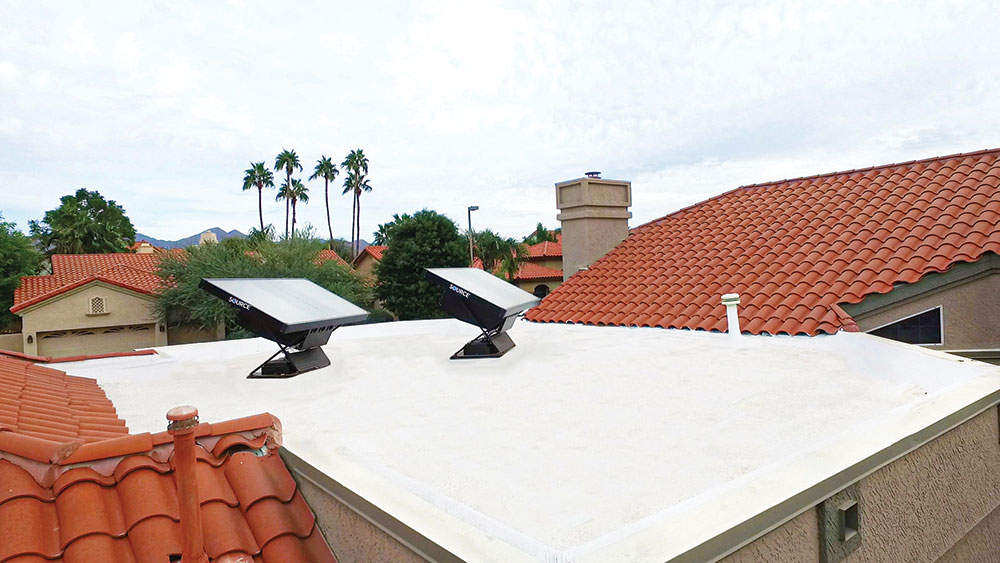
ON A LARGER SCALE
To this point, I’ve only discussed how to harvest water from the air on an individual basis. However, the problem we face is a huge one.
Obviously, a dehumidifier that produces 3 gallons a day isn’t going to solve large-scale drought. Seventy percent of the Earth’s surface is water, but only 2.5 percent of that is freshwater, and only 1 percent of that is available for drinking water. The rest is locked away in glaciers and the ice caps (although the ever-warming Earth is releasing some of that water, thus causing other issues).
Studies show that the air around us contains more than six times the amount of all the water in rivers. Harvesting this water on a large scale is a must, but it takes special equipment to do so efficiently. Thankfully, this issue is being studied and worked on at M.I.T. (Massachusetts Institute of Technology), UC Berkeley and other large universities around the world.
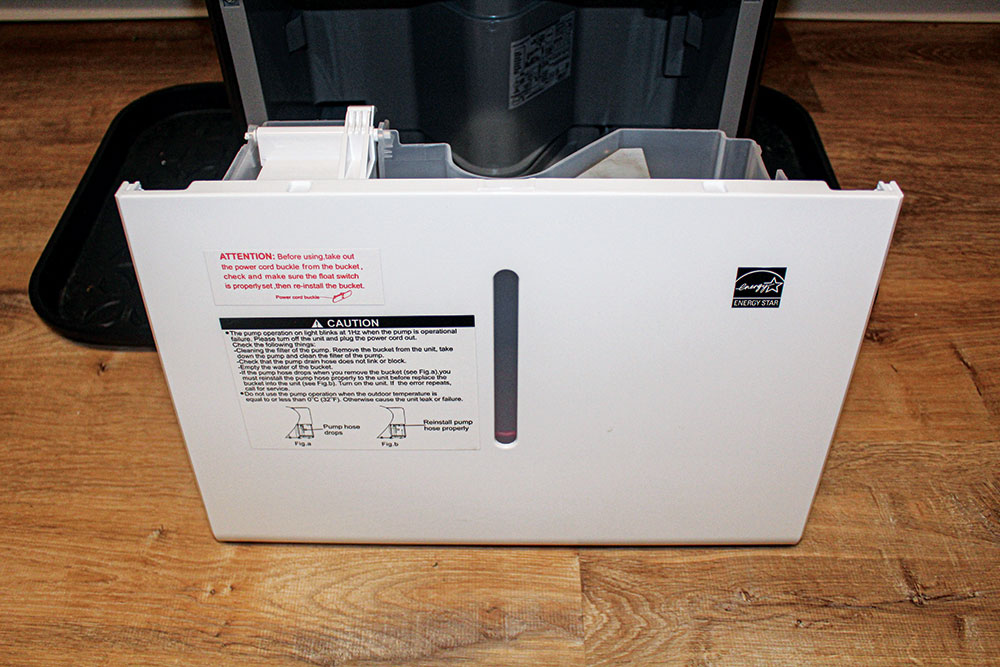
No matter how these water harvesters are designed, they need energy to run. Some researchers are toying with using biomass to generate power. Others are using massive arrays of solar panels—essentially, free power. Some of these large-scale water collection systems are in operation in many locations around the world.
The problem is that they need humid air to work properly. In areas of little to no humidity, such as the American Southwest, the Middle East or North Africa, current technology won’t work efficiently. Nevertheless, researchers are working on that issue as well.
In areas of low humidity, scientists are turning to the use of desiccants. “Desiccants” are materials designed to draw moisture out of the air and hold it like a sponge. The water trapped in the desiccants can then be extracted for use. Good examples of desiccants you might be familiar with are the little silica gel packets that are placed in packages for shipping or that are found in emergency food packets.
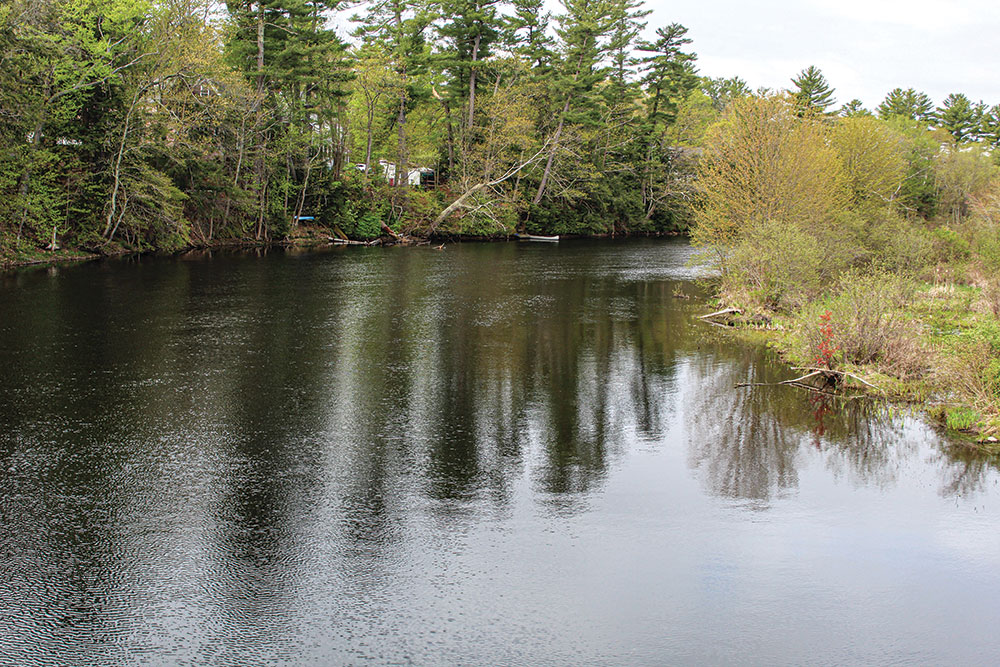
Studies have shown that desiccant use on a large scale can harvest more water from the air—and at a lower energy usage—than the traditional condenser technology currently in use. It’s also the only practical technology to use in arid areas of the world.
In 2017, the first atmosphere water harvester to use desiccants, called the SOURCE Hydropanel, was developed by Zero Mass Water. This was a totally off-grid system powered via solar panels. A dual solar panel system was found to produce about 10 liters of water per day, depending on the amount of sunlight and humidity. The technology has grown from there, and these types of water harvesters are being used around the world.
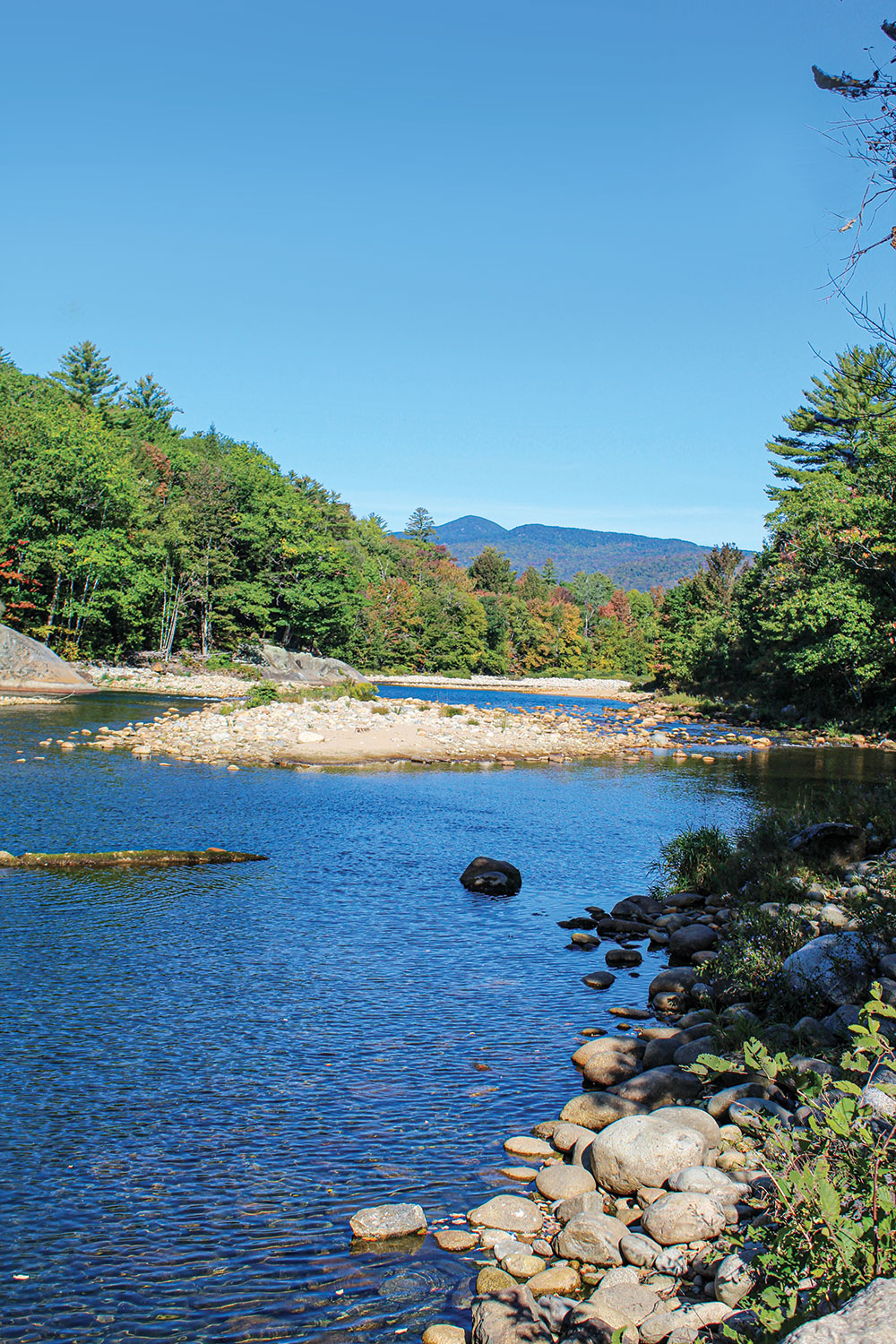
SOURCE makes hydropanels designed for residential, as well as communal, use. In both, solar panels power fans, which then draw air through desiccants that trap water vapor. The collected water vapor passively condenses and is collected in a reservoir. The collected water is then delivered to your tap.
The total water production will depend on your location, but the SOURCE system works in all areas of the world and is currently being used in 48 countries.
CONSERVE, CONTAIN
As the temperatures continue to creep ever higher, water consumption will increase as well. Conservation is the best way to fight that. However, as long as people waste water on lush, green lawns, we’ll need to find other ways to meet the demand.
Water catchment systems and using water captured from the atmosphere via recovery systems such as dehumidifiers and air conditioners are just a few ways to help us obtain needed water.
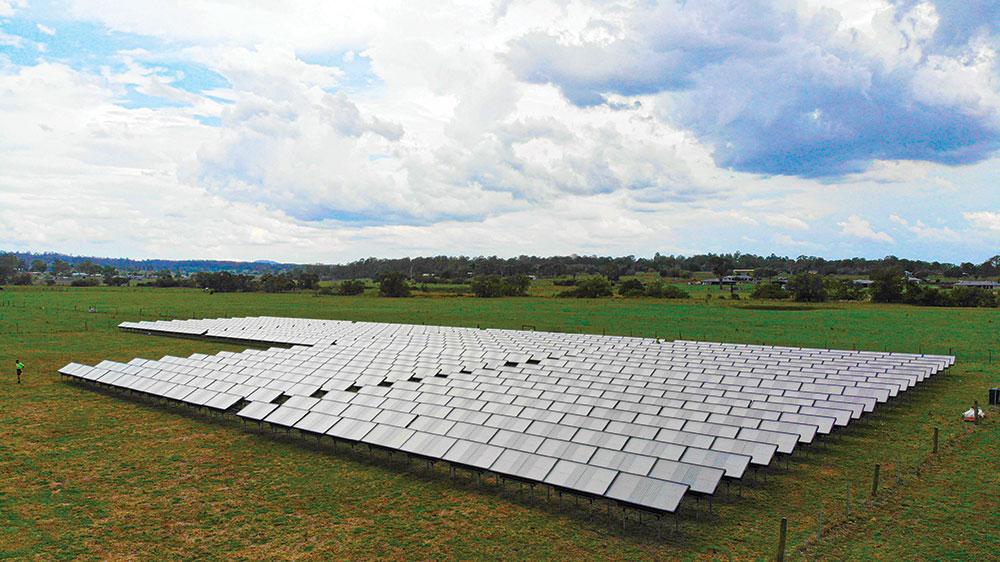
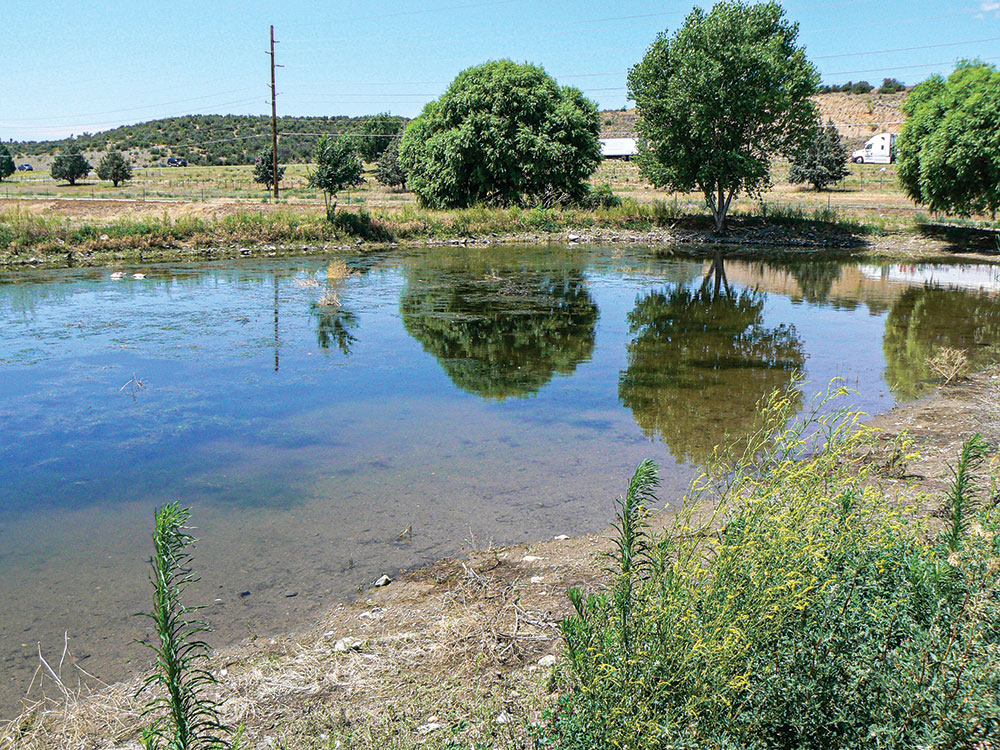
DEALING WITH DROUGHT
Severe drought is a worldwide issue and one that won’t be going away any time soon. Here are some steps we all can take:
- Reduce our overall use of natural resources. Walk or ride a bike; leave the car at home.
- Invest in alternative power sources such as wind and solar.
- Use less water. Conserve water around your home.
- Get rid of lawns. Use landscaping that requires little to no care and blends in with the environment of the area.
- Plant more native trees. Stop defoliation.
GET MORE INFORMATION
A great deal of work is being done to address the water crisis we’re going through, both by institutions and at the grassroots level.
State Agencies. State and town conservation agencies are great places to start your search for useful information.
Universities. Contact the universities in your area to see what type of research they’re conducting.
Conservation Organizations. Conservation organizations, both large and small, are focusing a great deal on Earth’s water issues and its causes.
SOURCE Global, PBC (hydropanel systems manufacturer). Check out its website: Source.co
A version of this article first appeared in the February 2022 issue of American Outdoor Guide Boundless.


